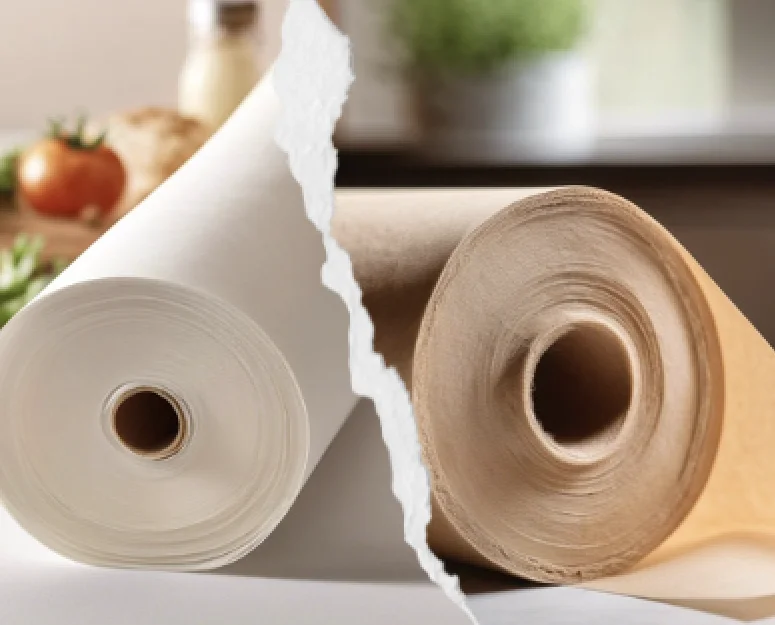Natural vs. White Baking Paper: An Insightful Analysis

When it comes to choosing between white and natural parchment paper, consumers often face a dilemma. The choice isn’t just about color—it’s about understanding the environmental impact and the value perception these colors bring. At PDL, we provide both options, recognizing that while natural parchment paper may convey a sense of eco-friendliness, akin to how a gold or silver coating might suggest premium quality, the reality behind the manufacturing process tells a different story.
Unveiling the Costs and Environmental Impact
While both types of parchment paper offer similar baking performance, natural parchment paper comes at a higher cost. But why is this the case? It’s not just about consumer perception; it’s about the actual environmental footprint each type of paper carries. Contrary to popular belief, natural parchment paper does not necessarily boast better environmental attributes—in fact, the opposite may be true.
The carbon footprint of parchment paper manufacturing varies, influenced by factors such as the pulp source, manufacturing processes, geographical location, and energy sources. However, when comparing the production of natural and white parchment paper under identical conditions, white parchment paper emerges as the more environmentally friendly option.
The Production Process: A Deeper Dive
Natural parchment paper is manufactured from tougher fibers, which demand more energy and time to process—or for paper makers, to refine. This increased energy requirement negatively impacts the carbon footprint of natural parchment paper. Additionally, on the production line, these fibers can lead to operational challenges, prolonging production time and inflating costs.
Many manufacturers produce both natural and white parchment papers using the same equipment. Switching from natural to white parchment paper necessitates thorough machine cleaning to prevent fiber contamination—a process that can take up to two days and consumes significant amounts of water and energy.
Why We Favor White Parchment Paper
Our preference for white over natural parchment paper is grounded in our commitment to reducing our carbon footprint. This commitment extends to our choice of producing Primabake over traditional Genuine Vegetable Parchment (GVP) paper, which is still prevalent among major North American brands. Unlike GVP, Primabake is not only compostable but also recyclable. Moreover, while GVP undergoes a two-step manufacturing process involving sulfuric acid, Primabake benefits from an advanced, single-step production method. This process is enhanced by the use of biomass energy and GreenFiber Technology, a proprietary innovation that significantly lowers energy consumption.
Conclusion
At PDL, our dedication to sustainability and innovation drives our product choices and recommendations. By understanding the nuances behind the production of white and natural parchment papers, consumers can make informed decisions that align with their values and environmental concerns.
Let’s work together to shape a more sustainable industry. Contact us today to learn more about our specialty paper solutions and how they can be integrated into your operations.
Recent Blog
- Papeteries du Léman (PDL) obtient la certification ISO 50001, consolidant son leadership mondial dans les papiers légers durables et compétitifs
- Papeteries du Léman (PDL) Achieves ISO 50001 Certification, Solidifying Global Leadership in Sustainable, Cost-Competitive Lightweight Papers
- PDL obtient la certification ISO 50001:2018 – Une nouvelle étape vers une production durable et performante de papiers légers et spéciaux
- PDL Achieves ISO 50001:2018 Certification: A Milestone in Sustainable Energy Management for Lightweight and Specialty Paper Manufacturing
- Primabake® : La référence mondiale du papier cuisson certifié, transparent et traçable